When I was backpacking in Arunachal Pradesh at the end of February 2020, there were whispers of a zoonotic virus in India. By the first week of March, the news was getting intense around Coronavirus. And then on 25 March 2020, India declared a national lock-down. I was fortunate to be home during the lock-down but it was clear that stepping out with my backpack was uncertain in the distant future. With travel out of bounds, I found refuge in Indian travel books. Might I say, the lockdown has made me a voracious reader…and why not? Books are great for armchair travel. They transport you to places through wonderful stories of people and culture, folklore and history, without you moving an inch from your chair (bed in my case!).
https://www.instagram.com/p/CA0FGAdp-Pk/
In this post, I’m going to recommend for you 5 Indian travel books to read during the coronavirus lockdown. If you like any of the recommendations, consider making a purchase from this website. It wouldn’t cost you anything, but your girl will earn a small commission on the purchase. Win-win!
Let’s begin then…
Indian travel books: Around India in 80 Trains
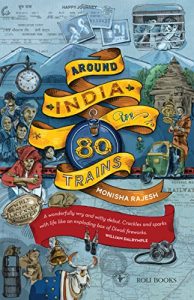 In this book, author Monisha Rajesh writes about her epic journey across India travelling in trains. It is adorably funny and witty and an amazing travelogue that inspires me from time to time to get out and travel.
In this book, author Monisha Rajesh writes about her epic journey across India travelling in trains. It is adorably funny and witty and an amazing travelogue that inspires me from time to time to get out and travel.
The book also serves as a brilliant insight into the Indian Railways and its routes, which is one of the largest railway networks in the world. If Indian trains are or have been an important part of your life, you HAVE to read this. Personally, I have bookmarked many railway routes from this book and I’m excited to take up these journeys myself. High on the list is the Kanyakumari-Dibrugarh (#15906) train which is the longest railway route in India covering 4200km over 83 hours. My fingers are crossed, someday soon! For now, go read this one. It is hands down, one of my favourite travel books, and I am sure you will love it as a much if you’re an avid backpacker. Buy this book
P.S.
Once you finish this book, follow it up with Monisha Rajesh’s – Around the World in 80 Trains. Buy this book
Indian travel books: Bombay Meri Jaan
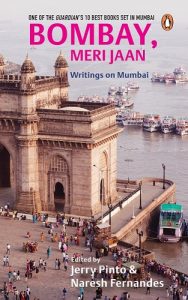 Mumbai is dear to my heart so I am always keen to read lesser known stories and anecdotes about this city. Bombay Meri Jaan is a beautiful collection of essays on the great metropolis that is Mumbai.
Mumbai is dear to my heart so I am always keen to read lesser known stories and anecdotes about this city. Bombay Meri Jaan is a beautiful collection of essays on the great metropolis that is Mumbai.
Even though I’ve been born and brought in Mumbai, this book felt like I’ve barely scratched beneath the surface. It is the equivalent of seeing Mumbai through the eyes of 44 authors who narrate a chapter each on their experiences and observations of this city. Some of my favourite essays were – Muharram in the Mohalla by Sameera Khan; Rage of the Marathi Manus by Meena Menon and Neera Adarkar; The Day It Rained Gold Bricks and a Horse Ran Headless by Jerry Pinto; Urban Fabric by Naresh Fernandes; and The One Billion Rupee Home by Paromita Vohra.
There’s a quote in the book that perfectly summarizes the reading experience of Bombay Meri Jaan, “Everyone has a Bombay story. And everyone’s Bombay is not the Bombay we think we know”. Highly recommend reading this one. Buy this book
Hello Bastar
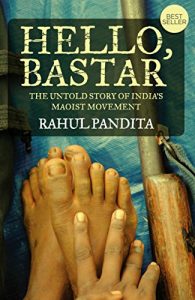 I finished reading Rahul Pandita’s ‘Hello Bastar’ in April 2020 amidst the coronavirus lockdown. This book is a quick read even if the contents are heavy. It narrates untold stories on the Naxal movement in India – mainly Bastar in Chhattisgarh and Gadchiroli on the Maharashtra border.
I finished reading Rahul Pandita’s ‘Hello Bastar’ in April 2020 amidst the coronavirus lockdown. This book is a quick read even if the contents are heavy. It narrates untold stories on the Naxal movement in India – mainly Bastar in Chhattisgarh and Gadchiroli on the Maharashtra border.
I was particularly interested in reading Hello Bastar after my backpacking trip in Chhattisgarh in the first week of February 2020. Bastar has been the epicenter of the Maoist movement although the situation is a lot better now and tourism is making in-roads.
Hello Bastar is a very intriguing glimpse into the life of the naxals, their struggles and their friction with the government. Much like what I heard from the locals of Chhattisgarh about the Naxals being Robinhood to the tribal community, this book stays true to that ideology. It is worth mentioning that I didn’t see this book as anti-establishment. I would encourage the readers to also dive in without being judgmental. Embrace it with the curiosity to understand the other side and you’ll be surprised to learn about a region in central India that is hardly ever spoken of. Buy this book
Everybody Loves a Good Drought
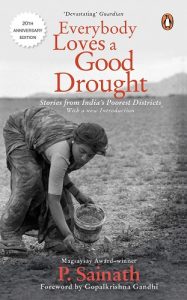 India has a special place in my heart. Not just the glammed-up India, or the one which foreigners visit seeking nirvana. I like India in all its shapes and forms…for its grit and grime…for its uncomfortable truths; which is what P. Sainath reports in this 1996 bestseller. It gives us a glimpse into rural India – how the poorest of the poor sustain and the often ludicrous efforts (read: tokenism) to support the poverty stricken. The book won P. Sainath the prestigious Ramon Magsaysay Award.
India has a special place in my heart. Not just the glammed-up India, or the one which foreigners visit seeking nirvana. I like India in all its shapes and forms…for its grit and grime…for its uncomfortable truths; which is what P. Sainath reports in this 1996 bestseller. It gives us a glimpse into rural India – how the poorest of the poor sustain and the often ludicrous efforts (read: tokenism) to support the poverty stricken. The book won P. Sainath the prestigious Ramon Magsaysay Award.
20 years later, we’d hope that the contents of this book get outdated but sadly it hasn’t, which is why this book is still relevant. It’s a terrific, insightful read taking you inside the Indian hinterlands where the poor barely scrape through. It highlights the glaring gap between the rich and poor which is only increasing by the day. The book is an important read and a worthy addition to your bookshelf if you enjoy reading Indian non-fiction. Buy this book
The Courtesan, The Mahatma & The Italian Brahmin
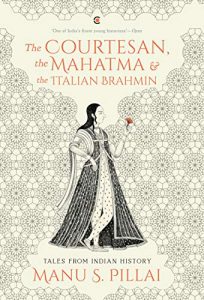 This fabulous book by young historian Manu S Pillai is a collection of essays unraveling India’s medieval past. It unearths lesser known stories of kings and queens and commoners which have been forgotten and/or expunged.
This fabulous book by young historian Manu S Pillai is a collection of essays unraveling India’s medieval past. It unearths lesser known stories of kings and queens and commoners which have been forgotten and/or expunged.
The chapters in this book are divided into ‘Before the Raj’, ‘From the Raj’ and ‘Afterword’. There are protagonists who refused to conform to oppressive practices as well as essays on British colonizers and Bhakti saints. I particularly loved the riveting tales of the fearless women from the past. Some of my favourite chapters were: ‘Jodhabai – More than Akbar’s wife’; ‘Meerabai – A different kind of valor’; and ‘The woman with no breasts.’ Two more interesting chapters which are my favourite are: ‘What if there was no British Raj’ and ‘What if the Mahatma had lived’. Manu S Pillai is a gifted storyteller and I was glad to discover this book. A highly recommended read. Buy this book
P.S.
If you want to read more from Manu S Pillai, check out two of his previous books on India – ‘Rebel Sultans: The Deccan from Khilji to Shivaji’ (Buy it here) and ‘The Ivory Throne: Chronicles of the House of Travancore’ (Buy it here).
That’s it from me in this post. If you like any of the recommendations, consider buying the books from this website. It wouldn’t cost you anything, but your girl will earn a small commission on the purchase. Win-win!
If you have any book suggestion for me, drop in the comments. I’d love to read your recommendations.
***
Liked this post? Also read
